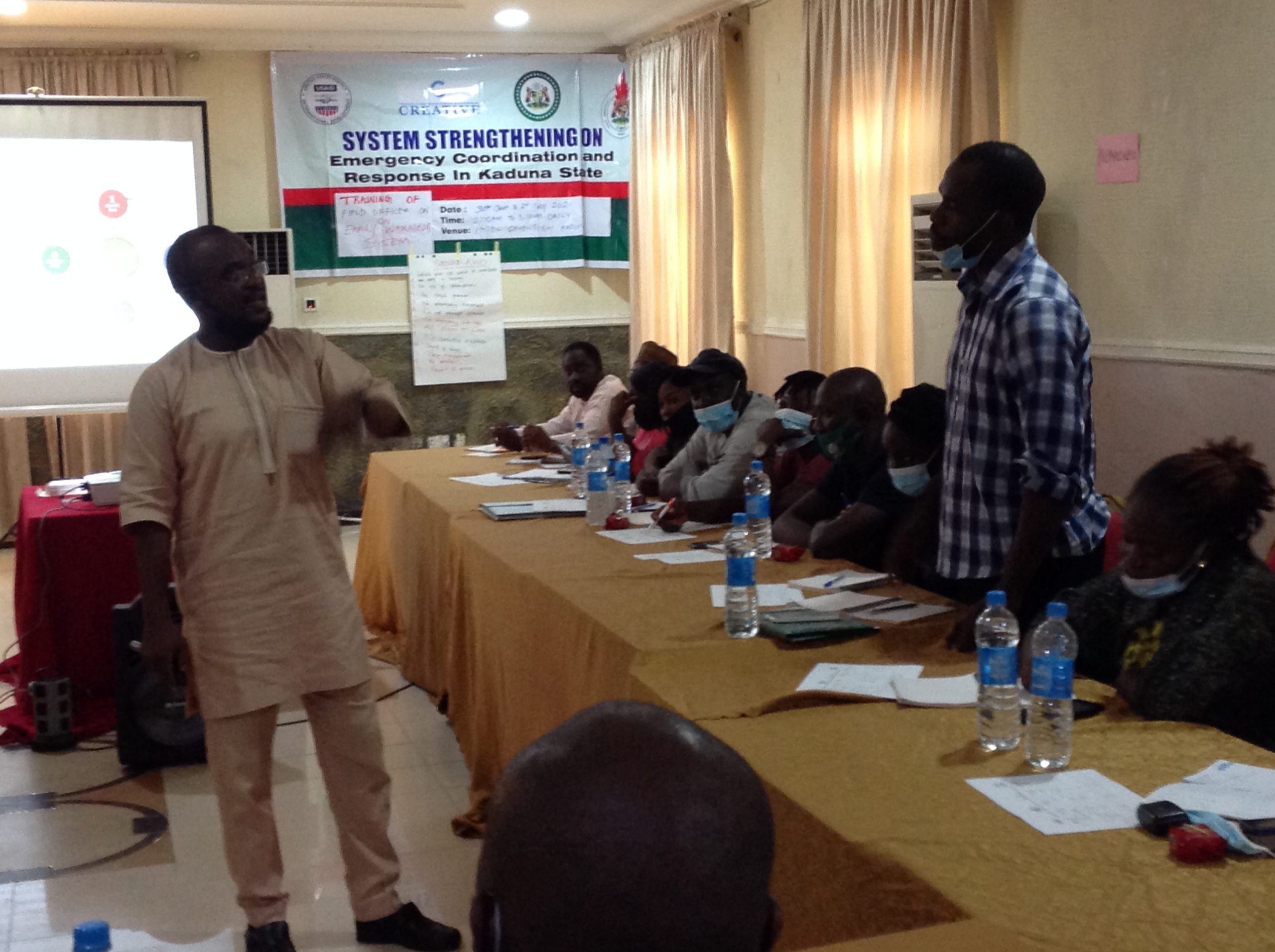By EDDY OCHIGBO
In continuation of its renewed effort to strengthen the capacity of communities vulnerable to hazards and disasters across the 23 Local Government Areas of Kaduna state, State Emergency Management Agency(SEMA) in collaboration with National Emergency Management Agency(NEMA) and multinational donor agencies, during the week, organized a-three day intensive training for field officers and critical stakeholders on early warning system set-up and strengthening, to consummate the ongoing Disaster Risk Reduction(DRR) campaign in the state.
The training, aimed basically at reducing vulnerability in the hinterland, touched on developing warning systems, risk knowledge, monitoring, forecasting, emergency coordination and response.
In a chat with Correspondents after flag-off of the event, SEMA’s Executive Secretary Abubakar Hassan hinted that “having gone to the communities to collect data on types of disasters they may have, it became necessary to come back and harmonize the data for immediate and further planning against possible disasters. It is important that before we get people to do what they need to do, we went into the communities to find out what hazard is peculiar to them. Having done that, it is equally important to come back, harmonize these data and then go back for early warning”, Hassan said, adding that “once you educate someone, he or she will be prepared to put into practice the new skills and guard him or herself against any disaster which is likely going to affect lives, property, farmlands or even livestock.
“This is about data and that was why we went into these communities because it is no longer about sitting here in the city and begin to assume what happens in the communities. It will help us in terms of planning for the future and even immediate response to disasters, the Executive Secretary remarked.
Head, Information and Public Relations, NEMA, Northwest, Halima Dauda told CUBINKS that the target is to see SEMA comes up with a good contingency plan that will encompass a project that other states can replicate. “We are changing strategy and it is not going to be about relief materials but less disasters and more responses. The only lapse we have identified and intend to solve is the gap between SEMA and Local Emergency Management Committee (LEMC). It is absolutely necessary to strengthen the LEMC and that we will work on”, she revealed.
A leading environmentalist and a consultant to the project, Gloria Kasang Bulus, observed that “so far there is a growing population that will in turn increase which could lead to increase in hazards and that’s why we need to learn how to mitigate them”.
According to Bulus, field officers were being trained again in the early warning system after which they would return to the 23 local government areas to set up this early warning system. “They will set up the system at the community level so the locals are thought how to prepare for hazards based on their hazard profiling and priority. The essence is to alert communities early enough and know what to do in the event of any hazard. We have a growing population and so the disaster risks. We have disasters like disease outbreaks like the famous COVID-19, communal clashes, pastoralists/crop growers clashes, food insecurity, oil spillage, flooding, fire etc which we must learn to manage”, she explained.
The Controller General, Safety Awareness and Environmental Support Initiative, and a field worker in this project, Yahaya Muhammed, said his involvement has opened his eyes to the need to move from city to grassroots for effective results.
“The new thing about this project is that it opens our eyes to the need to go down to the grassroots even though it has been a part of what my organisation has been doing. For example, one of the new things I learnt on the field in the course of this project happened in the Kudan ward of Kudan local government where I was told about a pest called Sharon which can eat up hectares of crop in a few hours which is already leading to food shortage and we all know the impact. Again, when it comes to the issue of a flood, we only look at it from city perspectives. But, when we go to the grassroots, we realise that both humans, property and farmlands are affected”, Mohammed said.






